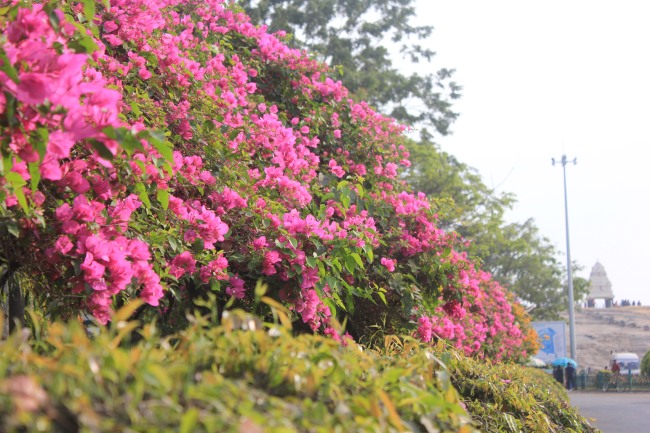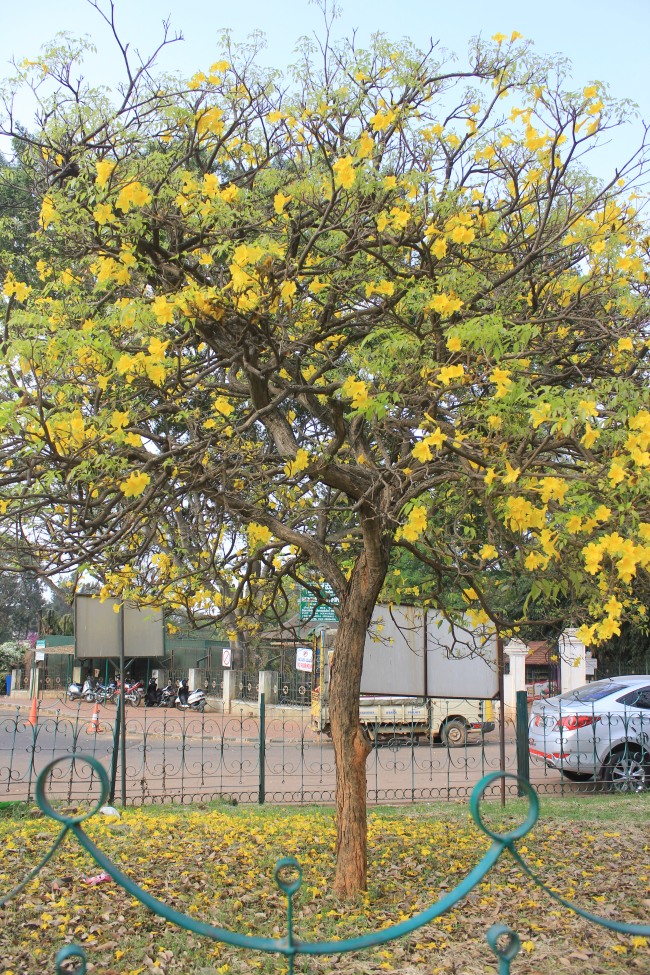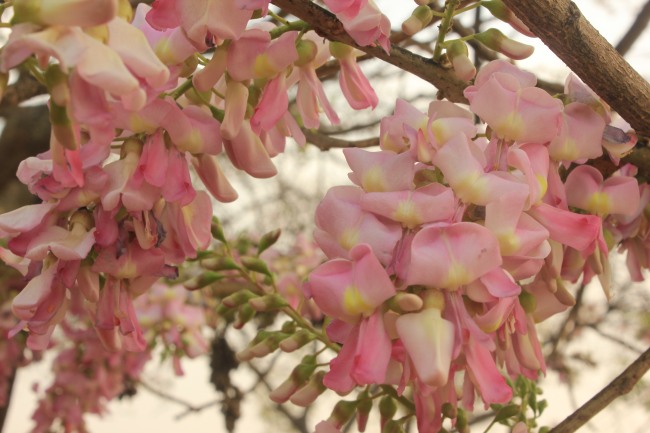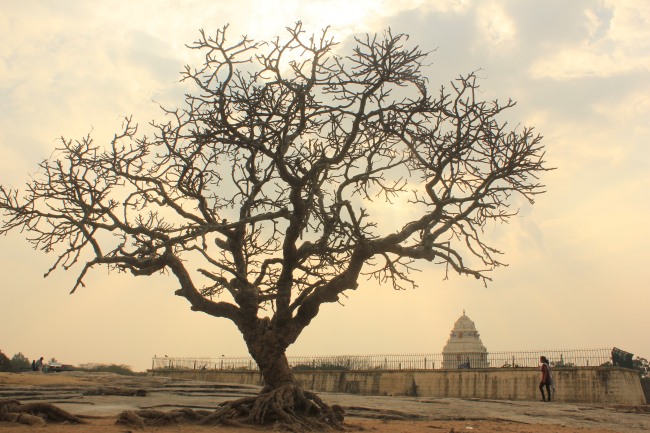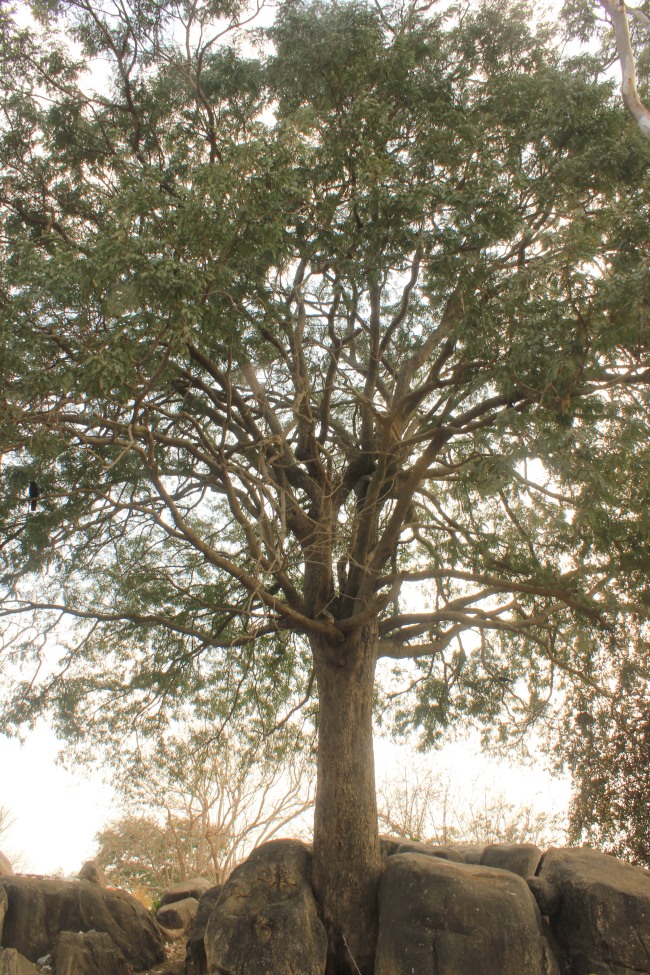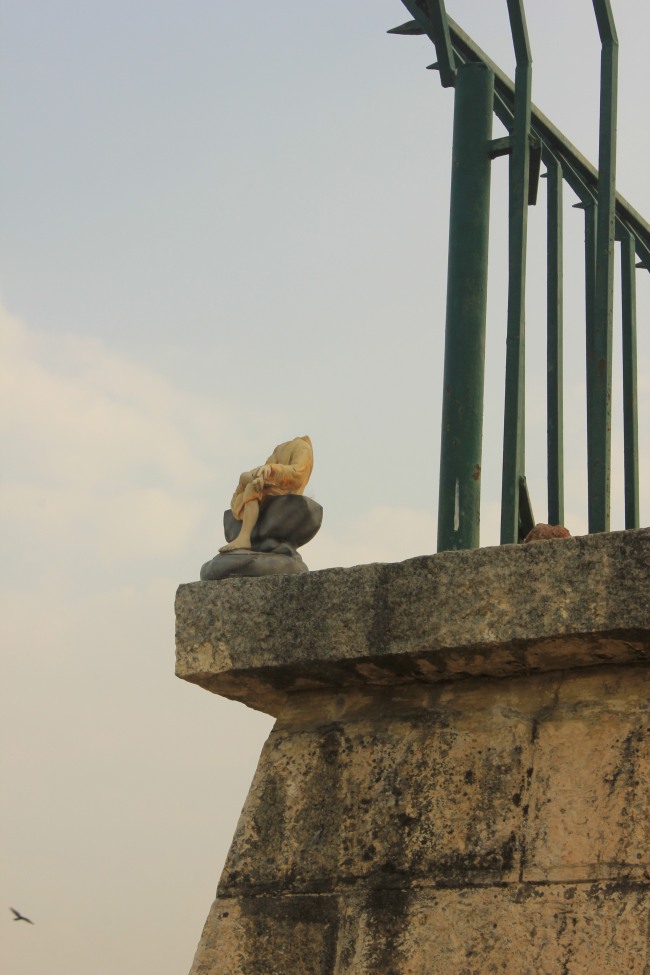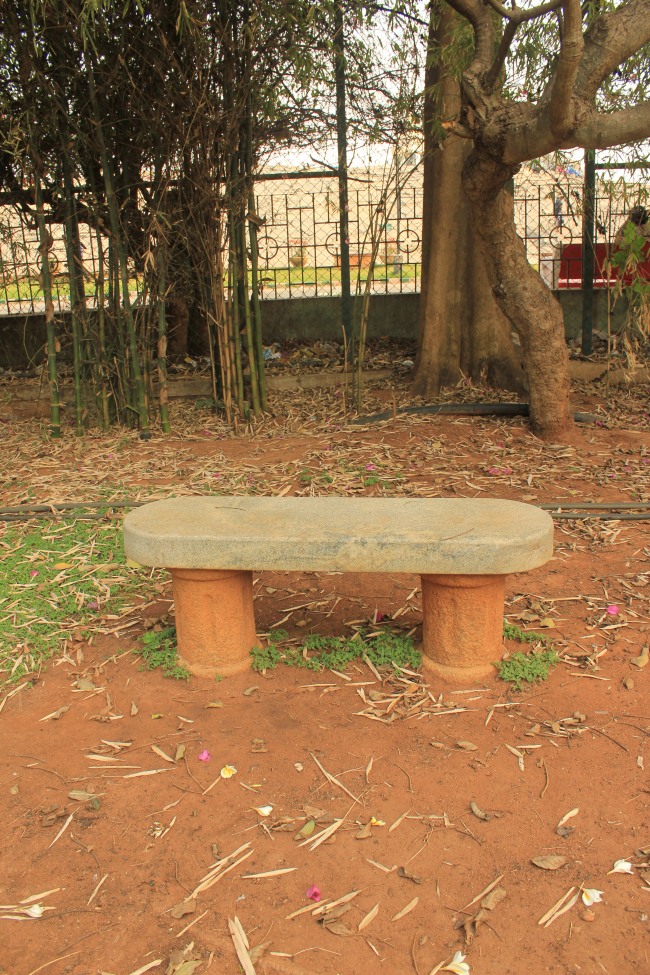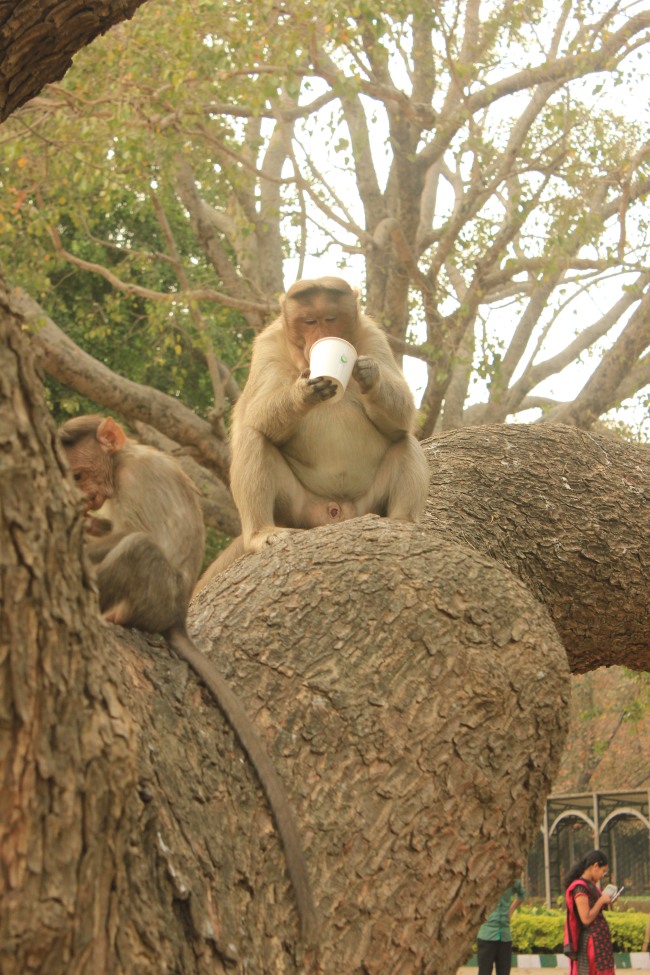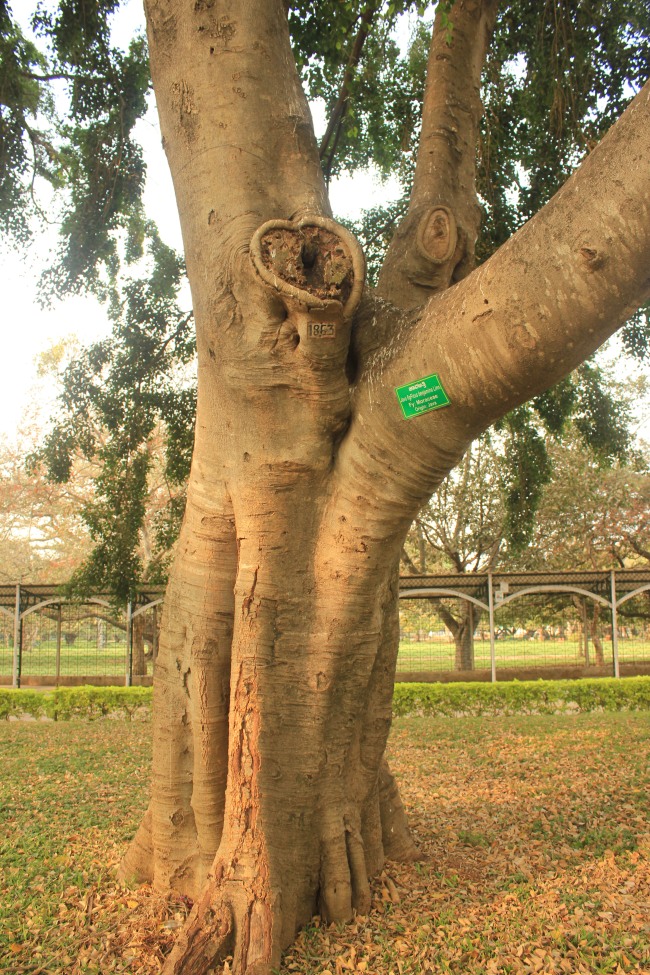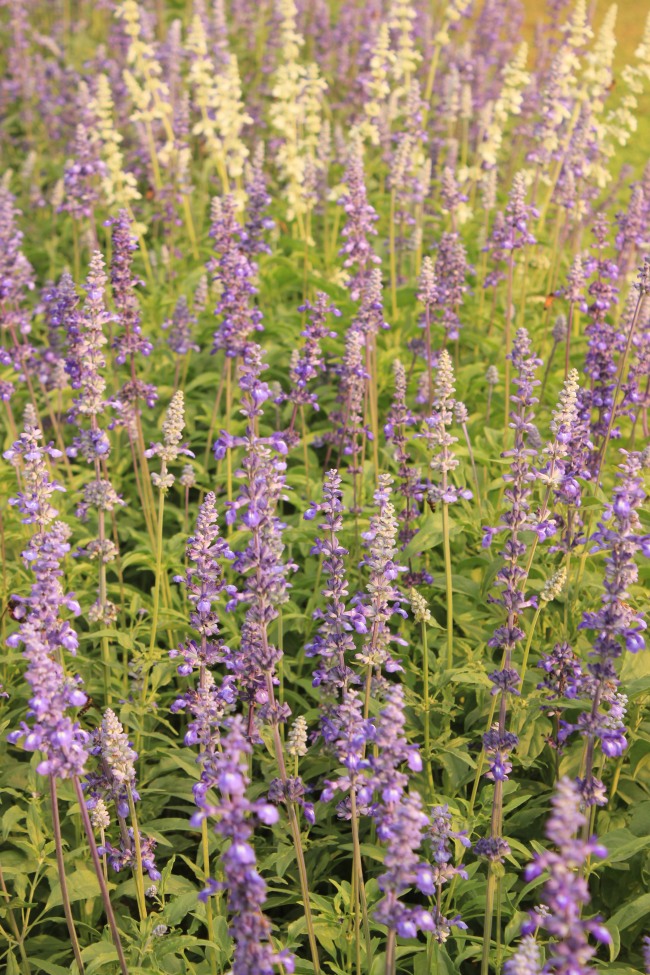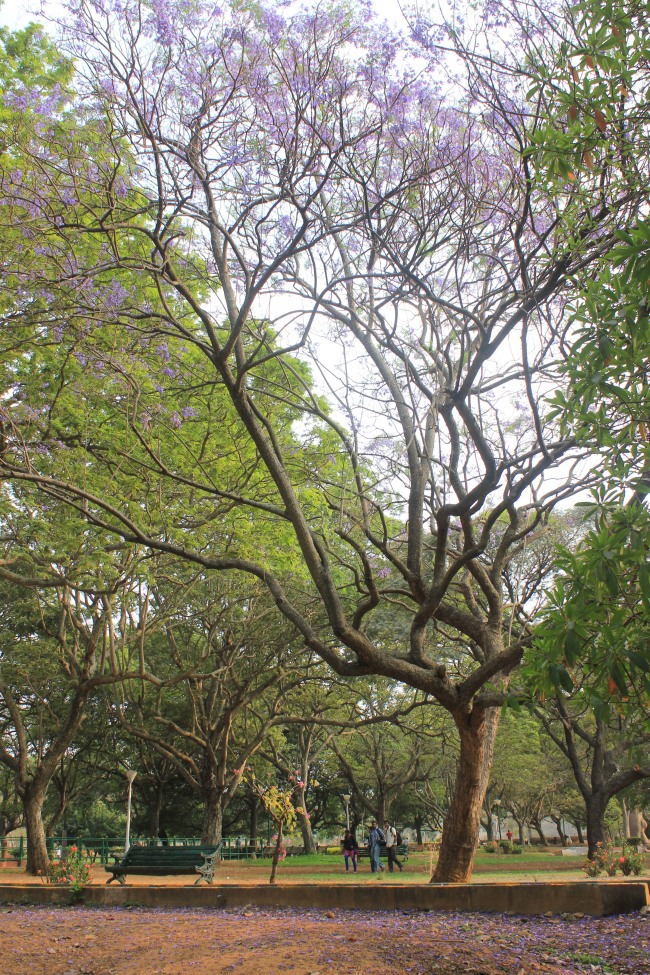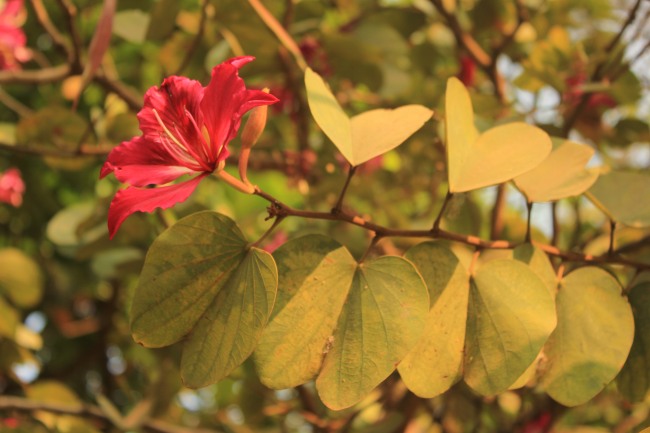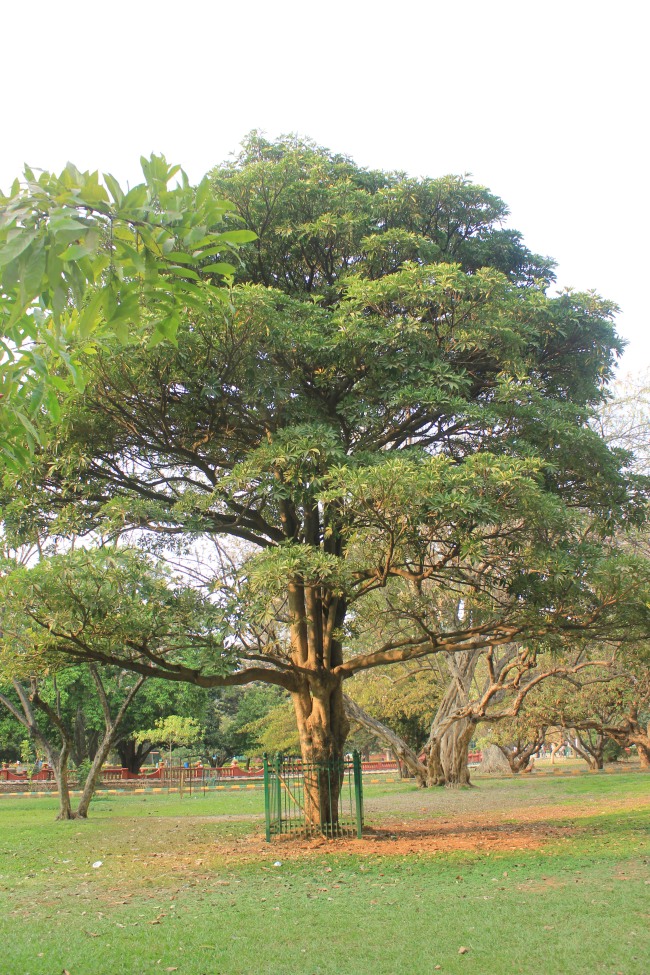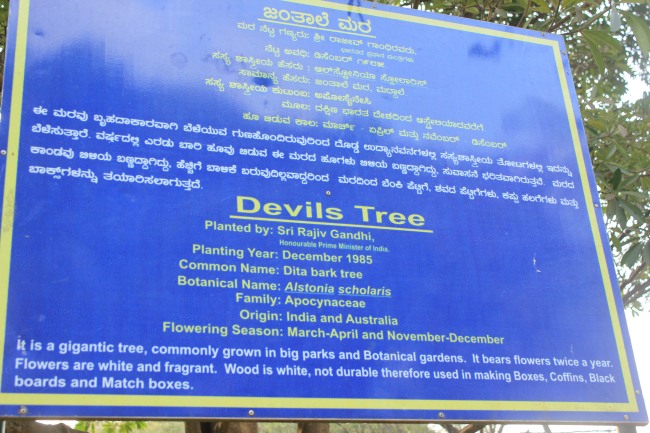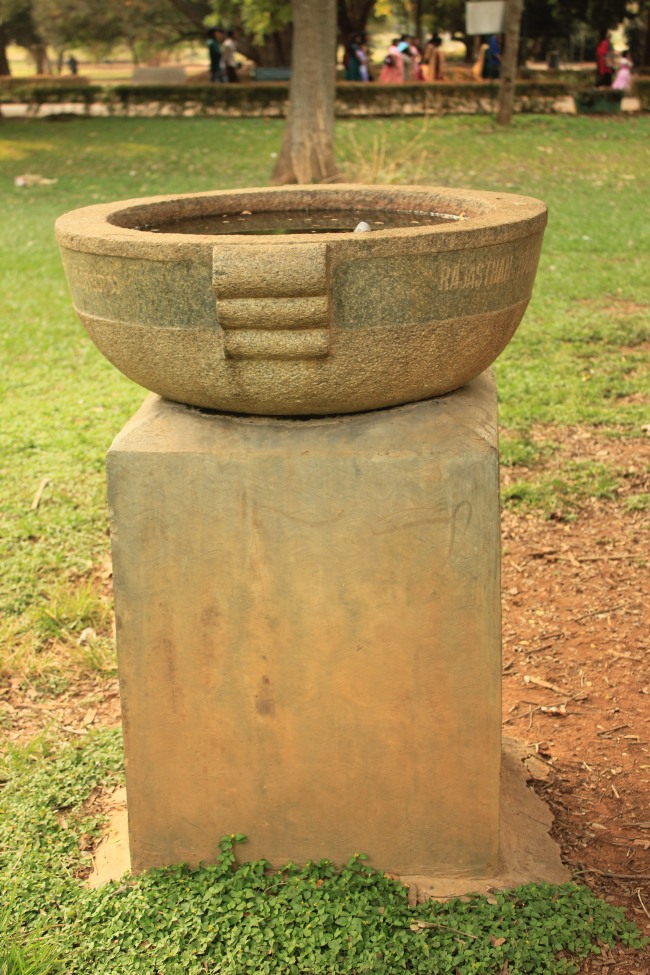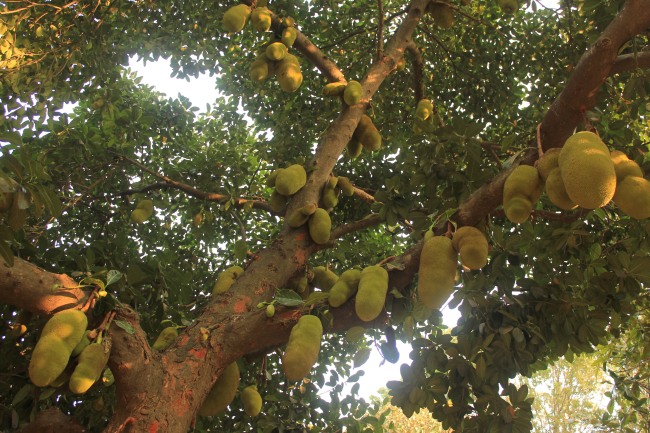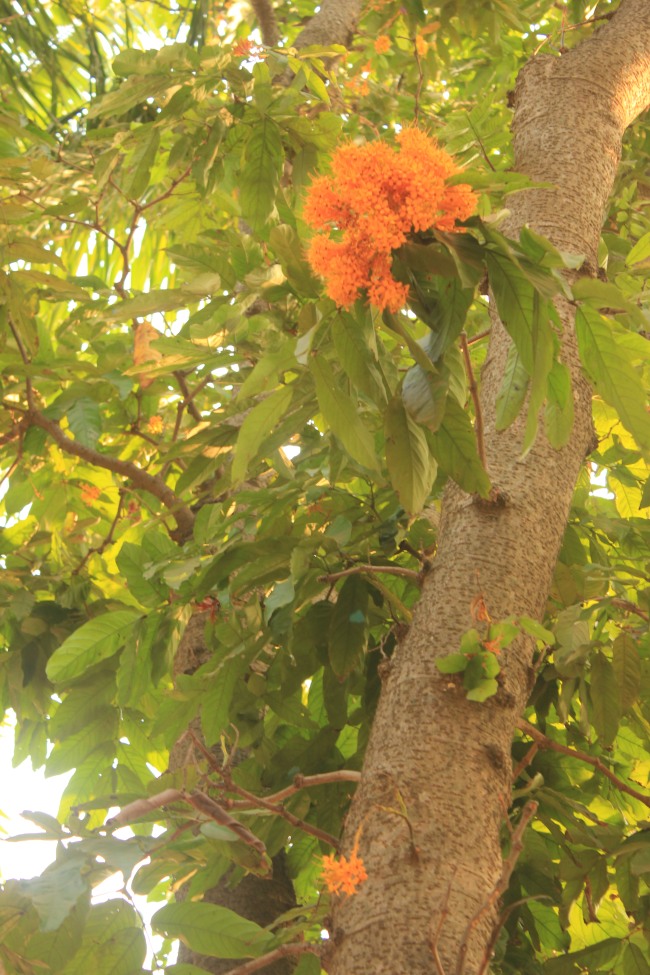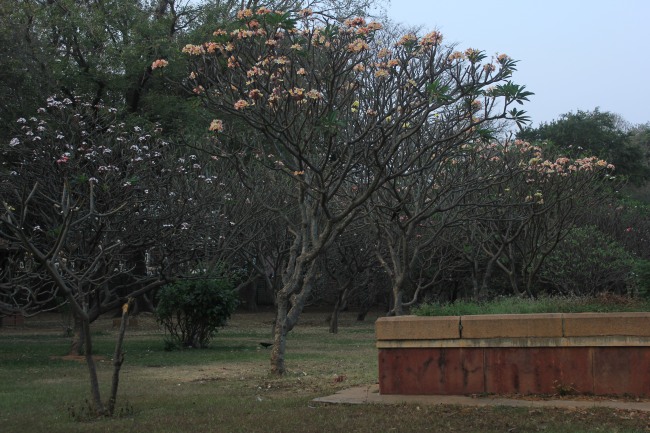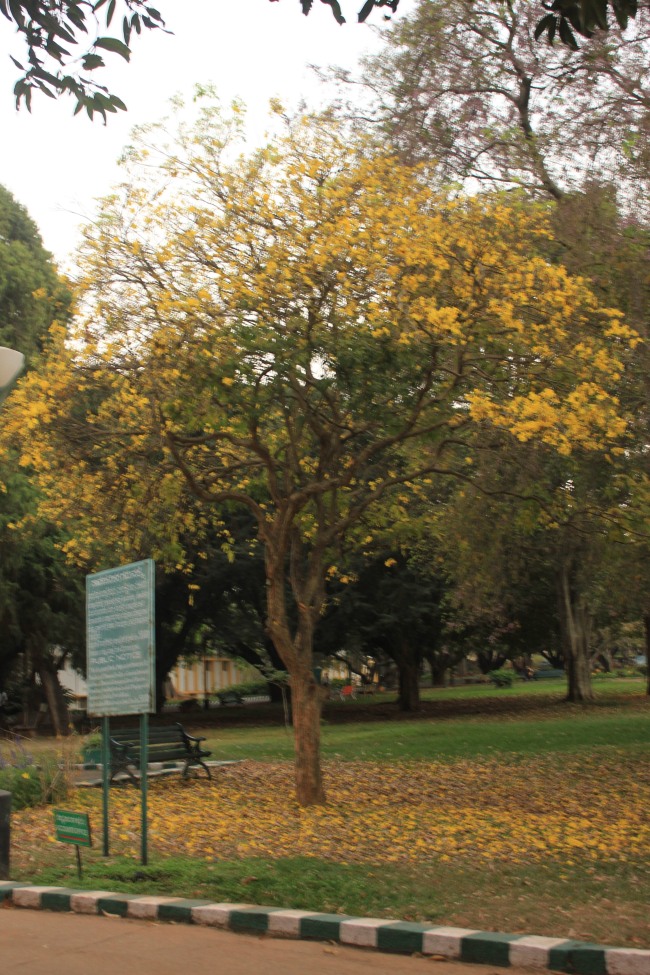I couldn’t have wished for a more pleasant Sunday morning. Daniel Boon’s famous 70s song ‘Beautiful Sunday’ kept playing in my mind. Back in the 70s and 80s, no Sunday was complete without listening to this popular track. I was heading for an INTACH-organised nature walk in and around Defence Colony, a tony locality in Indiranagar. As I left my home, the sun’s rays fell on my face. It felt so warm and nice.
As I couldn’t start at the time I wanted, I had to take a rick. The auto driver asked me to guide him with the GPS.
On reaching Defence Colony, I realised the place was a maze. Finding the starting point seemed tricky. I had to make a call to the INTACH co-ordinator to figure out things.
When I finally caught up with the walkers, they were trooping across one of the many lanes in the park. The walk was being led by Suchi Govindarajan, a naturalist.
Behind every tree are a lot of trivia and anecdotes. Suchi had lots by way of information to share with the walkers.
The first stop was beside a not-fully-grown variety of Christmas tree also called Cook’s pine tree named after the famous explorer Captain Cook. A native of Australia, the Cook’s pine tree is often referred to as the worst Christmas tree as it tends to bend very low towards the direction of light. This variety of tree is one of the oldest known specimens of tree and its origin dates back to the time of the dinosaurs. This variety of tree reproduces via pine cones.

Stop two was at a tree, the trunk of which had a two-tailed spider excellently camouflaging with the trunk. I could not spot the spider with my naked eye and had to take the help of a magnifying lens and my mobile camera. The two-tailed spider sucks on its prey and if it finds the prey too hard to prey on it secretes a liquid all over the prey to make it soft and easy to suck.

In the picture above, can you spot the two-tailed spider?
Stop three was at a majestic fig tree. Fig trees have always been the star attractions at most of the nature walks that I have attended. A native of India, the fig tree’s flowers are very attractive which is why they attract pollinators. The fig tree is pollinated by wasps. A pregnant fig tree wasp enters a fruit by boring a hole in it. In the process, she loses her wings. She lays eggs in the fruit and dies. The baby wasps that emerge from the eggs are both female and male. In due course, the male and females mate. The males bore holes in the fruit. The females leave the fruit from those holes and the cycle continues. The males die inside the fruit. Not many know that when we partake fig fruits we end up eating dead male wasps. The fig tree wasps ensure that there is lot of life around the tree.






The pictures above are of the four sides of the foundation stone of the park. The stone was laid in 1967.
A short distance from the fig tree was what remained of a once beautiful tree. While most of us know that the number of rings on a chopped tree trunk are an indication of the tree’s age not many know that in India it can be quite difficult to find out how old a tree is. This is because the transition between seasons is very subtle.There is a lot of life and biodiversity even around dead trees. Crevices in the trunk become homes to insects. Mushrooms, moss and lichens are also not an uncommon site.
Our next stop was below a massive tree with a creepy name. The Devil’s Tree is so known because it looks ghostly at night owing to its flowers. The tree has a fragrance about it. It is also called Saptaparini in Hindi as there are generally seven or sapta leaves in a cluster.


Trivia The river-like paths between two canopies of trees is known as canopy shyness.

We walkers next gathered around an African Tulip tree which as the name suggests is a native of Africa, a childhood favourite of many. I am sure all of us have memories squirting the juice of the African Tulip tree pods onto one another. It was so much fun. Not surprisingly, the fruits are called Neerkayi (waterfruit) in Kannada.

The nectar of the African Tulip trees can sometimes be toxic to bees leading to bee deaths. This is a mechanism employed by the trees to change the pollinating agent.
A brief darshan of another flowering tree, the Gulmohr or Mayflower, followed. Like the African Tulip tree, the Gulmohrs too have been an integral part of our childhood. Everyone will agree that a fully bloomed Gulmohr is a sight to behold.


A small snack-break later, the walk continued. There are so many things around us that we tend to ignore. The next tree stop was just that. A closer look at the tree trunk revealed silvery white formations called lichens.

In Hindi, lichens are called Pathar ke Phool and in Kannada they are referred to as Kal Hoovu.
The group then gathered under the majestic canopy of a Rain Tree. When you stand under a Rain Tree you usually have something falling on you. These are secretions of insects. The leaves of the Rain Tree remain closed whole day and usually open around 5pm. Because of this phenomenon the rain tree is also called the 5o’clock tree. It is for this reason that the tree is often referred to as Thooka Moonji (sleepy head) in Tamil.


Our next stop was under a Bottle Brush tree so named because its flowers resemble a bottle brush. This most aptly named tree is a native of Australia and adorns most gardens in the Garden City.

Our next stop was under another very familiar tree, the Rubber Tree, which Suchi tells is a variety of fig tree.

After the tryst with a majestic rubber tree, we moved to a large-leaved tree called the Junglee Badam tree. The leaves are large and also the fruits which look like a larger version of almonds.



We next stopped next to a tree that had a large white protrusion on its trunk. The white protrusion we were told is a fungus! Strange are nature’s creations! There are also filaments underneath the fungus.

Our next stop was at the Pongam or Hongae Mara, This tree is frequented by the leaf-cutter bee which explains the bite marks on leaves.


Enroute to the Indian cork tree or Akasha Mallige, we had a fleeting glimpse of the Camel’s Foot tree so named because the leaves resemble a Camel’s Foot. The bark of the Indian cork tree is of an inferior variety and as the name suggests is used to make cork. The flowers fall off at night and can be seen strewn below the trees.
The tree walk ended at another park below a fully grown Banyan tree. Banyan trees have long been appreciated by people around the world prominently Alexander the Great, Huien Tsang, Milton, Kabir and Tagore to name just a few. Particularly eye-catching about the Banyan trees are their dense aerial roots which sometimes touch the ground. The roots offer a good spot to hide. During the times of the Raaj, the British soldiers would often hide their ammunition in the roots. Kabir is known to have made a toothbrush out of the wood.

A young tree journalist Rasagy Sharma came in for a lot of praise. The walkers were amazed at his notes. Have a look:



The Banyan tree was the last stop of the tree walk. The sun’s rays had gotten stronger. It was as if the Sun God was gesturing to us, “Enough folks! Time to go home!”


